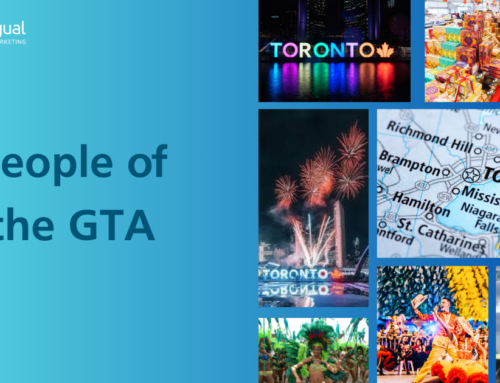Purchasing decisions are emotional. Marketers know that to sell you a luxury item, they need to appeal to your heart, not your head. Advertisements that effectively bypass our rational filters (through product positioning, engaging music, cute children, cuddly animals) and go straight to the heart are the most successful. Research has shown that an emotional response is 3 times more likely to influence our decision to buy something we’ve seen on television commercials, and 2 times more likely to influence our purchase decision when seen in print ads. “Studies show that positive emotions toward a brand have far greater influence on consumer loyalty than other judgments which are based on a brand’s attributes”1.

Trust is another important factor. Consumers will often pay more for a brand they trust, even when cheaper alternatives are available. Building trust on social media requires transparency and a willingness to engage with customers daily. Being effectively engaged by responding to questions and addressing issues not only demonstrates commitment to customer service, it has a ripple effect that can provide surprising ROI. Herschel Supply Co. offers a beautiful example of how social media can be effectively used to increase sales by improving customer service satisfaction (read more about this).
The need for transparency and online customer service is crucial to building trust. Given that the fastest demographic growth in our cities comes from immigration, adopting a multilingual, multicultural marketing strategy does not only makes sense, it is becoming indispensable. Making language and cultural adaptation an integral part of a company’s marketing strategy goes a long way towards building trust and brand allegiance, and in fostering peer to peer recommendations. Adopting a strategy that takes into account the diversity of our marketplace means speaking to customers in their own language and on their preferred social platforms. It is one of the easiest ways to demonstrate respect and understanding and to open the door to people’s hearts and minds.

The key to building a relationship with your customers: Speak their Language
Since 1961, the Office de la langue français (OLF) has acted as the defender of the French language in Québec, and protects what Québeckers perceive as their fundamental right to live, work and educate their children in French. Despite the substantial cost for companies to adapt their marketing and advertising approach for the French Canadian market, many consider reaching this demographic of 7 million Canadian customers well worth it. However, given that the same number of people in Canada speak neither English nor French, wouldn’t it be worth including other languages in your marketing strategy?
- A Chinese marketing strategy will allow you to reach half a million Chinese Canadians in Toronto & Vancouver2;
- Tagalog will help you engage with over 280K people and one of the fastest growing language groups in Canada3;
- Spanish expands your local market by over 50 million people in the US4
More than 600 newcomers per day have arrived in Canada since 2006.
Companies wishing to grow their market base would be wise to start right here, with our own, diverse populations. Once a product is popular with local Chinese customers, for instance, your brand is already well positioned to pursue expansion overseas.
Marketers need to find original ways to break through the noise. “The big opportunity in digital media is not the next new technology. It is adding emotion to existing websites and social media,” says Peter Murray, Ph.D., Consumer Psychology Specialist. “The promise of digital and social media is promoting consumer engagement, creating brand community, and developing customer loyalty. Technology alone is not enough to make this happen”.
The future of social media marketing: a tale of diversity
Trust-based marketing is growing, propelled by the need for transparency and for brands to engage with customers in an open and truthful communication that is as rewarding as it is demanding. However glossy or expensive a brand’s advertisement may be, we are much more likely to trust what other people say about it, than what the marketing team has to say. To reach and engage with customers, we need to be active on the social platforms, websites or forums where they are interacting. A common language is an obvious rallying point for those of us (a growing majority) who have relocated to a new part of the world. We search the web (in our own language) for advice on pretty much everything: from where to buy the food we like, to where we can connect with like minded people, join a sports team, or before making travel plans. Adopting a multilingual social media strategy is the low hanging fruit for companies looking to expand their market and reach more customers.














